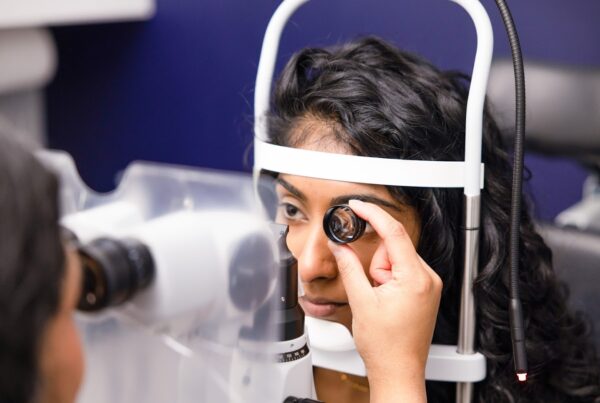Glaucoma is a critical eye condition that often creeps up silently, affecting millions globally. It’s characterized by increased pressure in the eye, leading to damage to the optic nerve, which can result in irreversible vision loss if not detected and managed early. Understanding glaucoma, recognizing its symptoms, and undergoing regular glaucoma testing are essential steps in preventing its devastating impacts. This article aims to shed light on the causes and effects of glaucoma, illustrate the importance of early detection through comprehensive eye exams, and emphasize how timely diagnosis and treatment can safeguard your vision against this insidious disease. Regular glaucoma testing is a cornerstone in maintaining eye health and ensuring that at-risk individuals can manage the condition effectively before it leads to significant vision impairment.
What is Glaucoma?
Despite being the leading cause of blindness for people over 60, glaucoma is a commonly misunderstood condition. This section explains the types of glaucoma, contributing risk factors, and the symptoms of this disease.
Glaucoma Types Explained
Glaucoma is not a single condition but a group of eye diseases that share a common trait: damage to the optic nerve, often associated with elevated intraocular pressure. The two main types are open-angle glaucoma, which progresses slowly and is the most common form, and angle-closure glaucoma, which is less common but more sudden and severe. Other types include normal-tension glaucoma and secondary glaucoma, each with unique characteristics and implications for the affected individual’s vision.
Causes and Risk Factors
The exact cause of glaucoma is not fully understood, but it is closely linked to increased pressure within the eye, known as intraocular pressure. This pressure damages the optic nerve, which transmits images to the brain. Risk factors for developing glaucoma include:
- Age (glaucoma risk increases significantly over 40).
- Family history.
- Race (higher prevalence in individuals with African or Hispanic heritage).
- Certain medical conditions like diabetes.
- Extreme nearsightedness or farsightedness.
Glaucoma Symptoms and Potential Vision Impacts
Glaucoma is often called the “silent thief of sight” because it typically doesn’t present symptoms until significant vision loss has occurred. In its advanced stages, individuals will notice peripheral vision loss, tunnel vision, or blurred vision. If left untreated, glaucoma can lead to severe vision loss and even blindness. Early detection through regular eye exams is crucial for managing this condition and mitigating its impact on vision.
Eye Exams for Glaucoma Prevention
Glaucoma testing plays a pivotal role in the early detection of the condition, significantly enhancing the chances of preserving vision. Through comprehensive eye exams, healthcare professionals can identify signs of glaucoma before symptoms become apparent to the patient. These tests measure intraocular pressure, inspect the drainage angle, assess optic nerve damage, and test the visual field. Early detection allows for timely intervention, which is crucial in managing glaucoma effectively and preventing the progression of vision loss.
At Durham Vision, we suggest adults aged 40 – 64 get an eye exam every two years and adults 65 or older get an eye exam annually.
How Regular Eye Exams Can Prevent Vision Loss
Regular eye exams are essential in preventing vision loss caused by glaucoma. By scheduling routine screenings, individuals can ensure any changes in eye pressure or optic nerve health are monitored closely. These exams facilitate the early detection of glaucoma and help assess the risk of developing the condition. Early diagnosis and consistent monitoring allow for treatments that can stop or significantly slow down the damage to the optic nerve, thereby preserving vision.
Glaucoma Testing Procedures
Glaucoma testing is crucial for the early detection and management of glaucoma, which can lead to irreversible vision loss if not addressed promptly. Regular screenings can identify the early signs of glaucoma, even before the patient notices symptoms. This proactive approach is vital for initiating treatments that can slow the progression of the disease and preserve vision.
What to Expect During a Glaucoma Test
During a glaucoma test, patients undergo several non-invasive procedures designed to evaluate the health of the eyes and the risk of glaucoma. These tests include:
- Tonometry: Measures the pressure inside the eye, identifying elevated levels that could indicate glaucoma.
- Ophthalmoscopy: Allows the doctor to examine the optic nerve for signs of damage.
- Perimetry: Tests the complete field of vision to identify any areas of vision loss.
- Gonioscopy: Examines the angle in the eye where the iris meets the cornea to determine whether it is open or narrow, affecting fluid drainage.
- Pachymetry: Measures the thickness of the cornea, which can influence eye pressure readings.
Each of these tests contributes to a comprehensive evaluation of eye health, aiding in the early detection and management of glaucoma.
Managing Glaucoma
For those diagnosed with glaucoma, understanding the available management strategies is crucial. Managing glaucoma involves a comprehensive approach to slow the condition’s progression and preserve vision. This section outlines effective treatments and lifestyle adjustments that can help control the condition and maintain eye health.
Treatment Options
Glaucoma treatment may include medications, such as prescription eye drops to lower intraocular pressure (IOP), which is crucial in preventing optic nerve damage. Advanced cases might require laser treatment or surgery to improve drainage or reduce eye pressure. These interventions aim to halt the progression of glaucoma and preserve existing vision.
Lifestyle and Home Remedies
Incorporating certain lifestyle changes and home remedies can support medical treatments for glaucoma. Exercising regularly and maintaining a healthy diet can improve overall eye health and help control eye pressure.
Importance of Adherence to Treatment
Patients and their families play a significant role in the effectiveness of glaucoma treatment. Adherence to prescribed treatment plans is essential for the effective management of glaucoma. Consistent use of medication prescribed by your eye doctor, attending follow-up appointments, and monitoring eye health can significantly improve treatment outcomes.
Frequently Asked Questions About Glaucoma
- What causes glaucoma?
Glaucoma is primarily caused by increased intraocular pressure (IOP) that can damage the optic nerve. Factors include age, family history, certain medical conditions, and physical injuries to the eye.
- Are there noticeable symptoms of glaucoma?
In its early stages, glaucoma often presents no symptoms. As it progresses, one may experience peripheral vision loss, eye pain, blurred vision, halos around lights, and severe headaches.
- How is glaucoma diagnosed?
Diagnosis involves comprehensive eye exams, including tests for eye pressure (tonometry), examination of the optic nerve (ophthalmoscopy), visual field testing (perimetry), angle inspection (gonioscopy), and cornea thickness measurement (pachymetry).
- Can glaucoma be cured?
While there is no cure for glaucoma, early detection and consistent treatment can manage the condition and significantly reduce the risk of vision loss.
- How often should I get tested for glaucoma?
The frequency of testing depends on your risk factors and current eye health. Generally, adults should have a comprehensive eye exam every 1 to 2 years, but more frequently if at high risk or over 40.
- What is the difference between open-angle glaucoma and angle-closure glaucoma?
Open-angle glaucoma, the most common type, progresses slowly as the eye’s drainage canals become clogged over time. Angle-closure glaucoma occurs when the iris bulges, narrowing or blocking the drainage angle, and can cause a sudden increase in eye pressure.
- Can lifestyle changes affect glaucoma?
Yes, certain lifestyle changes such as regular exercise, maintaining a healthy weight, and controlling high blood pressure can help manage glaucoma and reduce eye pressure.
- Is glaucoma only found in older adults?
While the risk increases with age, glaucoma can affect individuals of all ages, including infants and children. Early detection through regular eye exams is crucial for everyone.
- Can glaucoma lead to blindness?
If left untreated, glaucoma can lead to blindness. However, early detection, healthy lifestyle choices, and proper treatment can significantly reduce the risk of severe vision loss.
- How can I prevent glaucoma?
While it’s not always possible to prevent glaucoma, you can lower your risk of developing severe glaucoma by having regular eye exams, especially if you are at high risk due to family history, age, or other factors.
Protecting Your Eyes with Durham Vision Care
Understanding and managing glaucoma is essential for preserving vision and preventing potential blindness. With regular eye exams, early detection, and proper management, individuals can significantly reduce the risks associated with glaucoma. We encourage everyone, especially those at higher risk, to take proactive steps towards eye health. Schedule your comprehensive eye exam at Durham Vision Care today to ensure your eyes are healthy and to keep glaucoma at bay. Your vision is priceless; let us help you protect it with the care and expertise you deserve.










Recent Comments